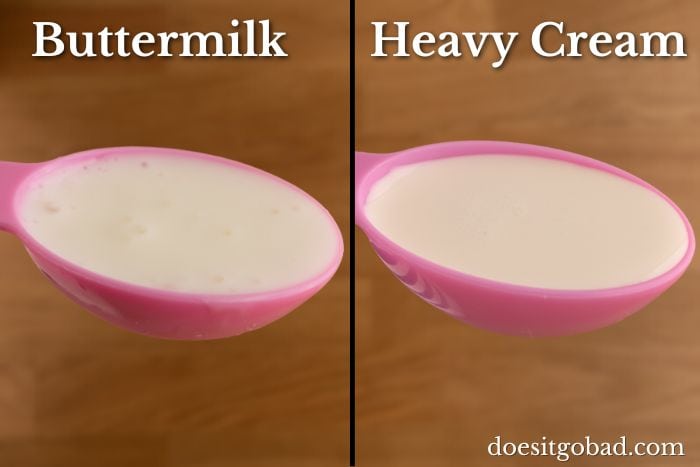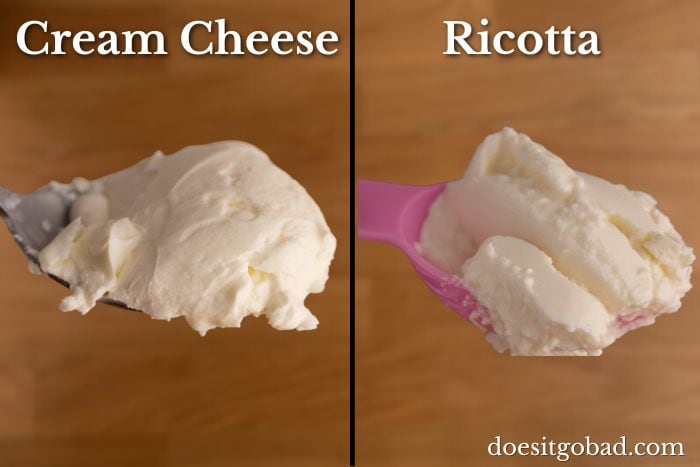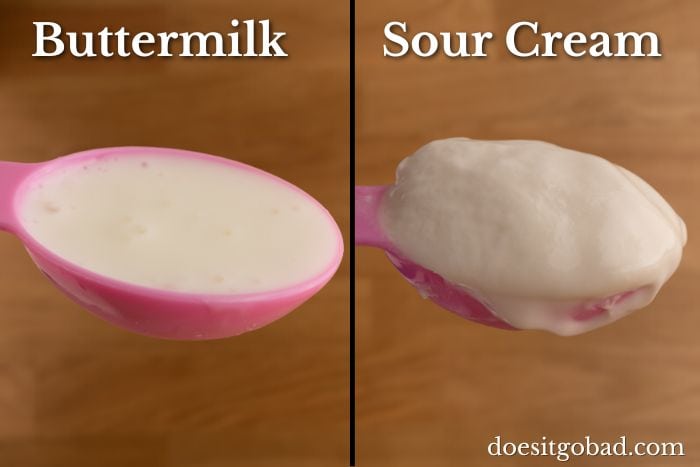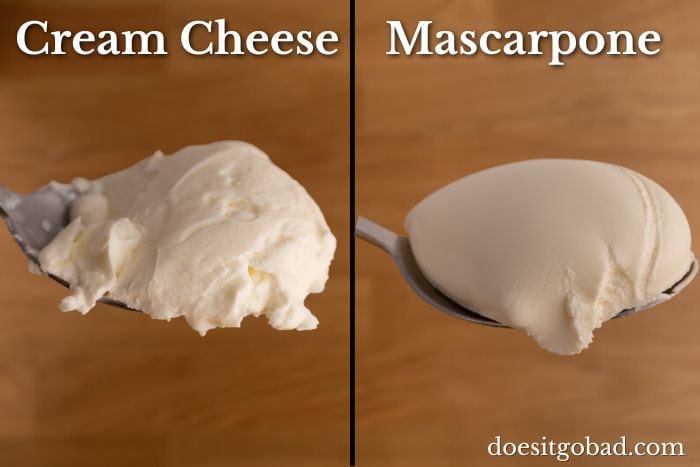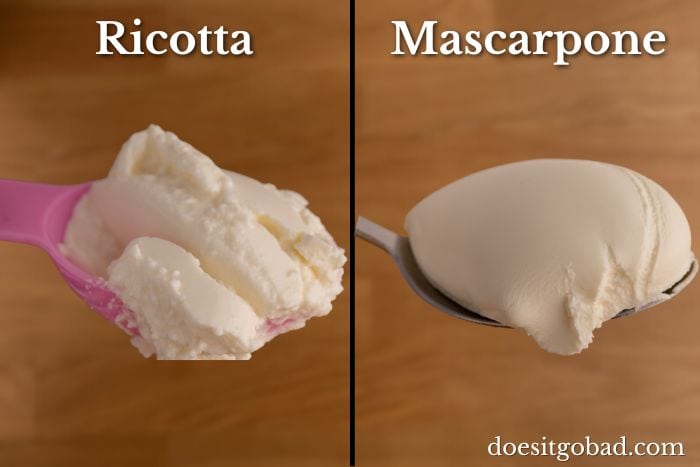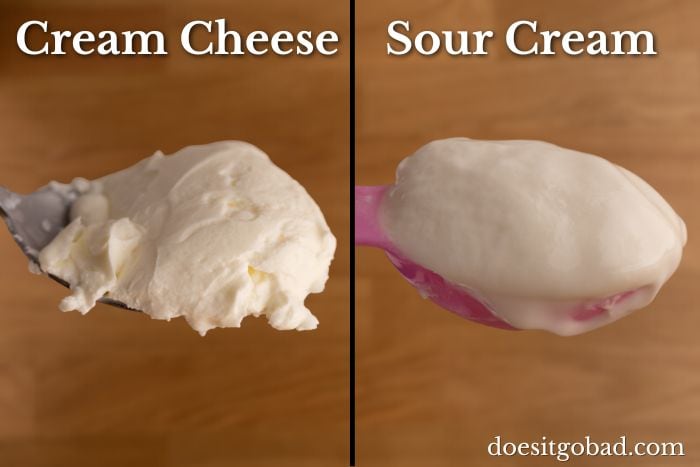Evaporated Milk vs. Regular Milk: Differences and When to Sub
Here’s all about the similarities and differences between evaporated milk and regular milk. Learn how they differ and when and how you can substitute one with the other.
Say a recipe calls for evaporated milk, but you’d like to spare yourself the trouble of going to the grocery store to grab a can. Can you use milk instead?
Or maybe you don’t have any milk around but need some for cereals or pancakes. And as it turns out, there’s a can of evaporated milk sitting in the pantry cupboard. Is that a good substitute?
Let’s jump right in.
When and How to Substitute
While milk and evaporated milk are two different products, you can substitute one with the other in most cases. The textures are different, but you can fix that fairly easily.
The only thing that will be different is the flavor: even if you dilute evaporated milk with water, it will still taste slightly sweeter and caramelized from the heating process.
That’s the high-level overview. Let’s dig in.
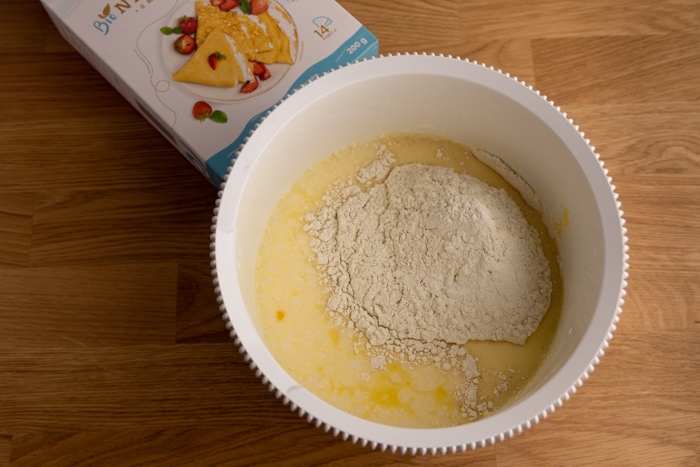
Can I Use Regular Milk Instead of Evaporated Milk?
You can substitute evaporated milk with normal milk, and there are two ways to go about that. The first is to use table milk without any processing and sub one to one. The second is to make homemade evaporated milk.
Table milk is thinner and lighter, so it won’t add much richness to whatever you’re cooking. And it’s going to thin out whatever sauce, soup, cake topping, or cake you add it to.
(Plus, it’s less sweet so the flavor will be different, too.)
In other words, unless you can reduce the amount of water elsewhere in the recipe, using regular milk as-is will noticeably alter the texture of the dish. Therefore, I recommend going with that substitution only if you know what you’re doing.
Alternatively, you can use a mixture of 1 part heavy cream to 1 to 3 parts milk for a much richer substitute. I discuss the idea in my article on heavy cream versus evaporated milk article.

A better way, though a much more time-consuming one, is to make your own evaporated milk.
All you need is a saucepan, a stovetop, and about half an hour. And some milk: for every cup of evaporated milk, you’ll need more than two cups.
The process is straightforward, and you can probably go through it while doing other kitchen work. Here’s a detailed guide and video by Gemma from Bigger Bolder Baking if you’re interested.
If you make homemade evaporated milk, you have exactly what you need and can proceed with your recipe without any adjustments.
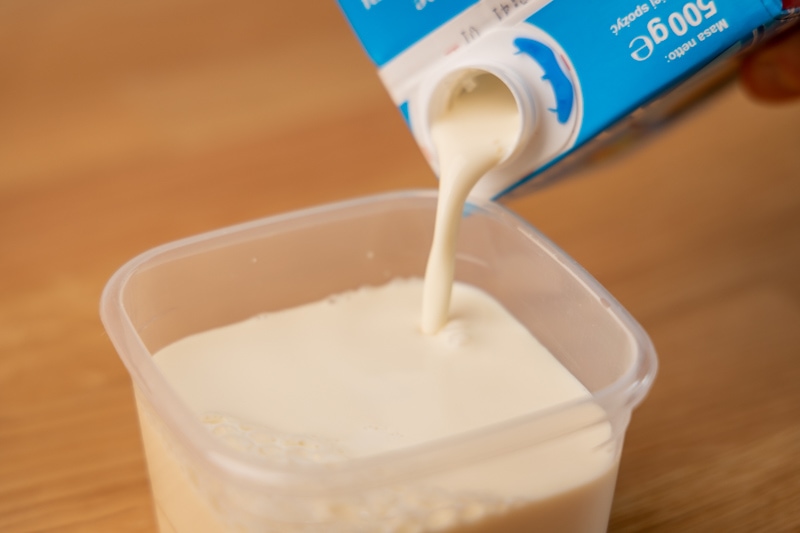
Can I Substitute Evaporated Milk for Regular Milk?
You can substitute evaporated milk for regular milk in two ways. The first is to swap in evaporated milk one for one. The other is to dilute the evaporated milk 1 to 1 with water, which mixture is very similar texture-wise to normal milk.
Evaporated milk is richer and sweeter, so if you’re going for a direct swap, the texture might be a bit thicker and somewhat sweeter than usual. That might work okay in pancakes, smoothies, or puddings, but not necessarily so in cakes and other baked goods, where the batter may turn out too dense.
If you don’t want to deal with those issues, the solution is simple: dilute evaporated milk one to one with water.
Evaporated milk has about 60% of its water content removed, but mixing two parts evaporated milk with three parts water to make “perfect” table milk might be a bit fiddly. Because of that, most brands recommend diluting it 50/50 for simplicity.
Plus, the difference in texture is minimal and, in almost all cases, negligible.
The only thing to remember here is that even if you dilute evaporated milk with water, its taste will still be slightly different. If you pay close attention to it, you’ll notice that caramelized note, but that shouldn’t be an issue in most cases.

Evaporated Milk vs. Regular Milk: Differences and Similarities
Now that we’ve covered subbing evaporated milk with table milk and the other way around, let’s talk about the differences and similarities.
Below, I divided the basics of evaporated milk vs. regular milk into a few sections so that it’s easy to find what interests you most.
Taste and Texture
Evaporated milk is richer and slightly darker than regular milk. Its dairy taste is also more intense, and there’s a slight caramel flavor you cannot find in table milk.
All these changes directly result from the production process: evaporating the water from milk in a high-heat process.
Because of those slight but noticeable changes, the two dairy products aren’t usually used as substitutes. At least not without some processing (diluting or cooking) or adjusting other ingredients in the recipe to make up for the texture and flavor differences.
That brings us to how they are used.
Uses
| Evaporated milk | Milk |
|---|---|
| Sauces | Drink |
| Cake toppings | Added to oatmeal, cereals, granola, etc. |
| Added to soups and chowders for richness | Pancakes |
| Desserts, pudding | Mac & cheese and other casseroles |
| Pies, cakes, etc. | Cakes, pudding |
| As a coffee whitener | As a coffee whitener |
| To add intense dairy flavor to a dish without diluting it too much | All sorts of custards |
Evaporated milk is slightly more intense and sweeter than regular milk, which is why it’s used quite often in baking. But it’s nowhere as sweet as condensed milk, so it still works great in all sorts of sauces, soups, and so on.
Plus, if need be, you can dilute it to make a milk substitute with a slightly different flavor.
Milk is much more watery than evaporated milk, so it works great wherever lots of liquid is needed. That’s why it’s the most popular option for cereals, oatmeal, and pancakes.
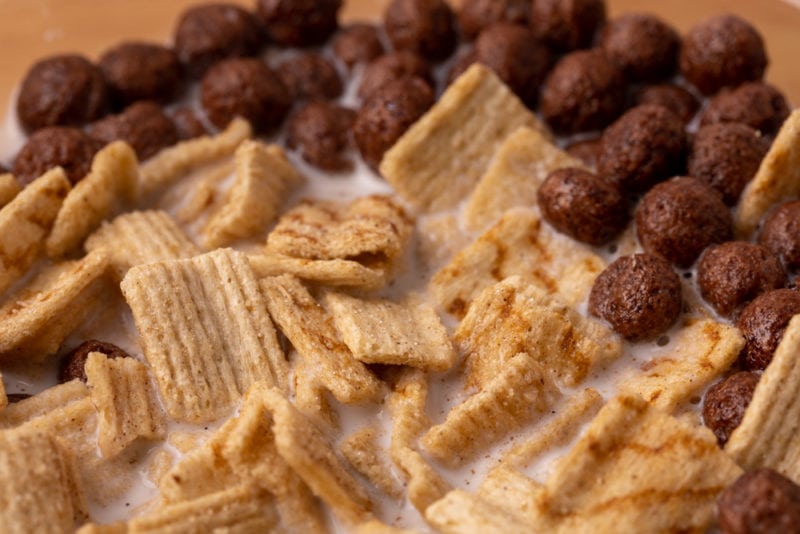
Nutrition
Here are the macronutrient profiles of evaporated milk and regular milk (per 100g):
| (per 100g) | Evaporated milk [source] | Milk [source] |
|---|---|---|
| Energy | 134 kcal | 61 kcal |
| Protein | 6.81g | 3.27g |
| Fat | 7.56g | 3.2g |
| Carbohydrates | 10g | 4.63g |
Since evaporated milk is regular milk after removing 60 percent of its water content, it’s no surprise that its energy content and all of the macronutrients are a bit more than double that of table milk.
Obviously, you can buy fat-free milk or fat-free evaporated milk if you want, but the basic rule still stands: evaporated milk will have more than double the macronutrients of the milk it’s made of.
That water reduction in evaporated milk makes it richer and its dairy flavor more intense. And that’s what concentrates the macronutrients.
In any case, if you’re thinking about swapping evaporated milk for regular milk in your coffee, that will add extra calories to your daily intake. Unless, of course, you add half the amount, which should add at least as much flavor without diluting your coffee too much.
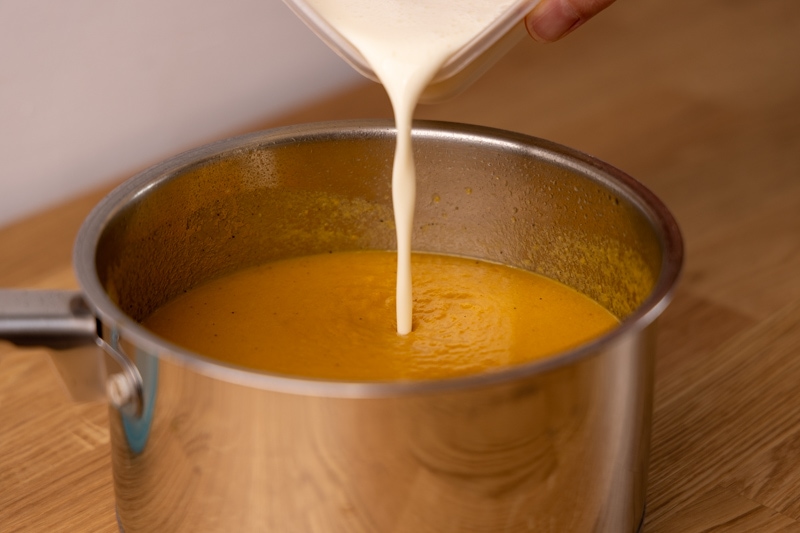
Production
This one is pretty straightforward.
The milk you buy in the store is (usually) homogenized to prevent cream separation and even out the texture, then it’s pasteurized for extra safety. And if you buy the shelf-stable variety, it also undergoes the ultra heat treatment that extends its storage time significantly.
Evaporated milk starts with homogenized milk. Then 60 percent of the water is removed, and the resulting product is chilled, stabilized, sterilized, and canned. That gives evaporated milk quite a long shelf life.
Evaporated milk’s darker color and caramelized flavor are the results of high heat treatment thanks to the Maillard reaction.
As already mentioned in the section on substitutions, you can make your own evaporated milk by simply simmering regular milk for about half an hour and straining what’s left. There might be a slight difference in flavor and color due to a different way of processing the milk, but in almost all recipes, the differences will be negligible.
Rotten Records: Share Your Snap!
Caught some food past its prime? Upload your photo to “Rotten Records” and help others spot the signs of spoilage. Every image makes our food community safer and more informed!
